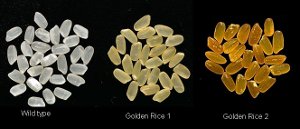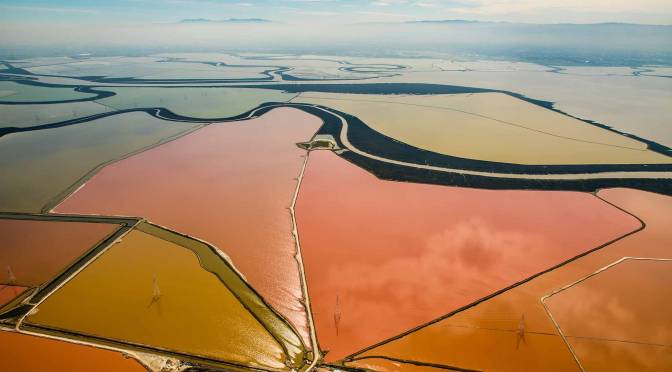So Dr. Ingo Portykus decided to create a strain of rice that would make provitamin A in the rice kernel. Since there isn’t any easy way to breed this into rice or to turn the necessary genes on in the rice kernel, he decided to add a couple of genes instead.
The first plant he engineered didn’t make a lot of provitamin A but with a couple of tweaks here and there, researchers managed to make an orangish rice capable of providing a good portion of someone’s vitamin A. Thus golden rice was born. And with it, a whole lot of controversy.
The current controversy has centered on the unknown health effects of this rice and on the danger of the added genes getting out into nature. These are the same sorts of things that are brought up about any genetically modified (GM) foods.
My thoughts on the matter are that each GM food should be looked at individually with respect to risks and benefits. For each one we should ask, “Do the benefits outweigh the risks?”
This is going to be different for each GM crop. For example, planting of Round Up ready crops requires no tilling of the soil which conserves the soil and protects its fauna. (Yield is also often improved.) But these crops require a lot of the herbicide Round Up to be sprayed onto crops and if the added gene gets loose, it will make weeds Round Up resistant.
It is an open question about whether the risks outweigh the benefits with these GM crops. Frankly I lean towards planting them because the benefits to the soil outweigh the risks of Round Up but I understand the opposing side’s point of view. Not so with golden rice.
If golden rice can do what is promised, the effects on people’s lives will be enormous. When fully implemented, half a million people might not lose their sight. In other words, it would be like saving every person in Oakland from going blind. Each year.
And golden rice could save 1-2 million people from dying. That is like keeping every person in San Jose and San Francisco from dying. Again, each year.
So the benefits are obvious. And odds are that people would get them too. Early studies have shown that people can get sufficient vitamin A from around 3.5 ounces or 100 grams of golden rice per day.
The risks are hazier. Adding the genes could have created some subtle change in the biochemistry of the rice kernel that will prove harmful. This doesn’t seem very likely especially since the plant already makes provitamin A in the leaves. There is also no evidence that anything like this has happened.
Still, it is formally possible. But does this very low risk outweigh the potential benefits?
The two genes they added could escape into nature but this is extremely unlikely with rice. I am told that rice plants are self pollinating and that the pollen is very short lived. Makes sense to me given the thousands of varieties planted all over the world.
Even if they did get out, they would only become a problem if there was some sort of advantage to a plant having these two genes. What this advantage might be isn’t clear. This is unlike making a weed Round Up ready which might be a real advantage.
So the risks are minor and the potential benefits huge. But is there another way to get these folks vitamin A? Yes but none of them have worked particularly well to date.
For example, if these folks could eat a more varied diet, they wouldn’t suffer from vitamin A deficiency. Same thing if we could get more of them vitamin A supplements.
These might be the solutions in a perfect world. However, as the nightly news and even Greenpeace’s website shows, we do not live in a perfect world.
Golden rice seems to me to be the best way right now to save hundreds of thousands of people their sight and millions their very lives each year. Once Greenpeace gets behind golden rice or supplies sufficient funding for alternative methods of getting people the vitamin A they need, I will start supporting them again.
37.7749295 -122.4194155
 The evolution of golden rice. Click image for a larger version. Courtesy Golden Rice Humanitarian Board.
The evolution of golden rice. Click image for a larger version. Courtesy Golden Rice Humanitarian Board.